Road Networks
Source file: howto-road-networks.htm
Road networks allow Evolution to calculate the time it takes to transport material from one point to another. A road network consists of a number of edges and points that have their own attributes. For example, rolling resistance and speed limit are applied on edges, whereas the ending velocities are applied on points.
Significant points on the road network can be flagged and identified as waypoints. Evolution allows you to set the following waypoint types:
| Source | A point on the road network defined as the exit point to the pit or stockpile. |
| Destination | An exit point from the road network to a destination such as a mill, stockpile, waste utility, or virtual waste dump. |
| Permission | A point in a pathway that only accepts material transported by certain kinds of trucks. |
| Force | A point in a pathway that the included trucks must pass through. |
| In-pit crusher |
Marks an in-pit crusher that reduces the size of the chunks of mined material by crushing them into smaller chunks directly in the pit. Note: This waypoint type is only available in Origin Blocks and will become available if you include an in-pit crusher in your setup. See In-pit crusher for more information. |
For more information on waypoints, see Adding and Removing Waypoints, Using the Waypoint Editor, and Creating a Waypoint Collection.
After defining the waypoints of your road network, you must create links between them. See Configuration for more information on linking and unlinking waypoints.
Note: While the linked section shows how to connect the waypoints in Origin Solids road networks, the same principles apply to road networks in Origin Blocks and Epoch setups.
Once your waypoints are linked, Evolution will set or interpolate paths between them. Analysing how Evolution classifies each component of a road network will help you understand the way it calculates the best route. See the next sections of this topic for detailed information.
Note: While the images in this topic refer to an Origin Solids setup, the same principles apply to Origin Blocks and Epoch setups.
Road network components
Every road network must include the following components:
-
A solid (or a block in Origin Blocks setups): The source of the mined material.
-
A source waypoint: The exit point onto the road network from the mining pit or stockpile.
-
A destination waypoint: The exit point from the road network to a destination such as a mill, stockpile, or a waste dump.
-
An on-bench path: The pathway from a solid or a block through a ramp point in a bench to the road network.
-
An in-pit path: The path taken from the source solid or block, along the bench to the road network, and along the road network until it reaches a source waypoint.
-
An ex-pit path: The path taken along the road network between a source waypoint and a destination waypoint.
Pathways that end in a waste dump will also contain an on-dump path, a pathway between a destination waypoint, and the site of transfer.
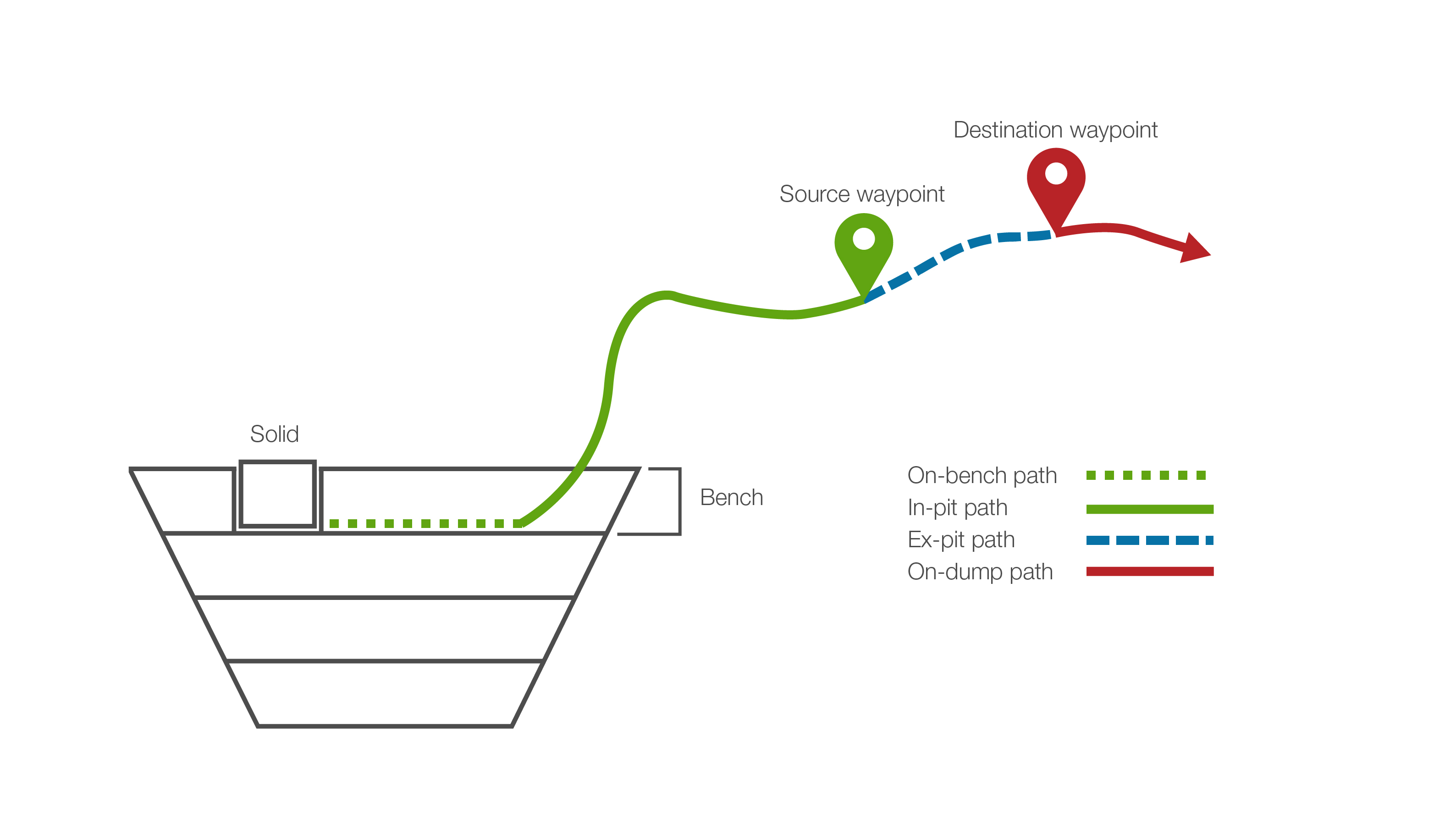
Calculating the best route
When you ask Evolution to transfer the material from a solid to a particular destination, it first calculates all the legal pathways to that destination, by first labelling each edge as in-pit or ex-pit from the perspective of each source waypoint.
The image below shows the way of calculating the potential in-pit and ex-pit edges from Source A, which is the reference point.
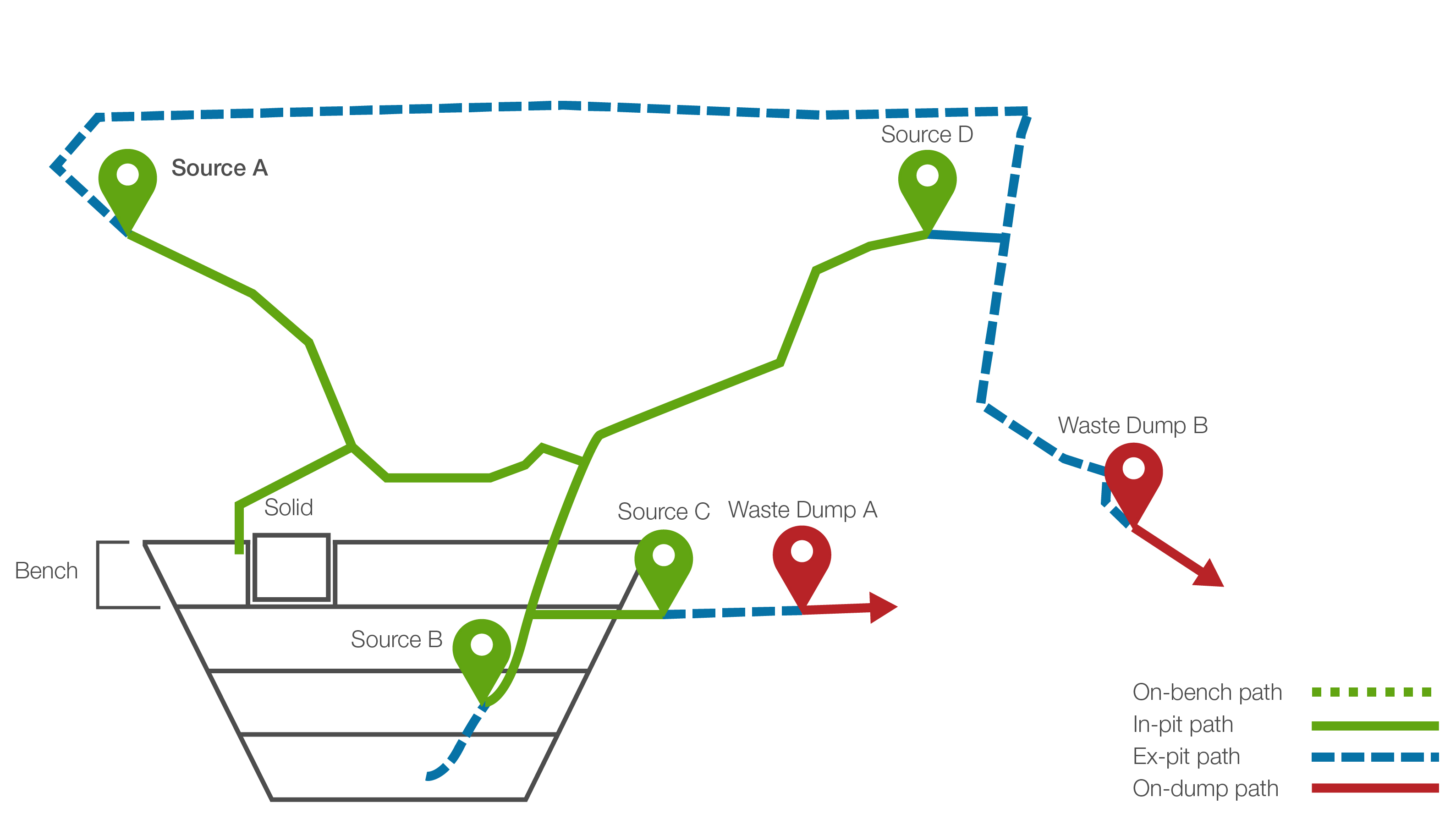
After labelling each edge, Evolution finds the closest ramp point at the same height of the solid (called on-bench path) and then calculates the shortest in-pit path to Source A.

Once Evolution calculates the shortest in-pit path, it can then find a corresponding ex-pit path and calculate the shortest path.

Next, Evolution repeats this process for each source point and then chooses the best path. The best path is the one that has the lowest cost and the least amount of interpolation.
Worked example #1: Internal sources and filters
In the course of calculating the best route, as referenced in the example above, Evolution will identify that the shortest legal paths between the source and mill destination points are between Source B and Waste Dump A, and also between Source C and Waste Dump A, marked in the image below. However, the path from Source B to Waste Dump A would require the digger to drill downwards, which is not a sought-after solution, as it consumes more fuel than driving horizontally.
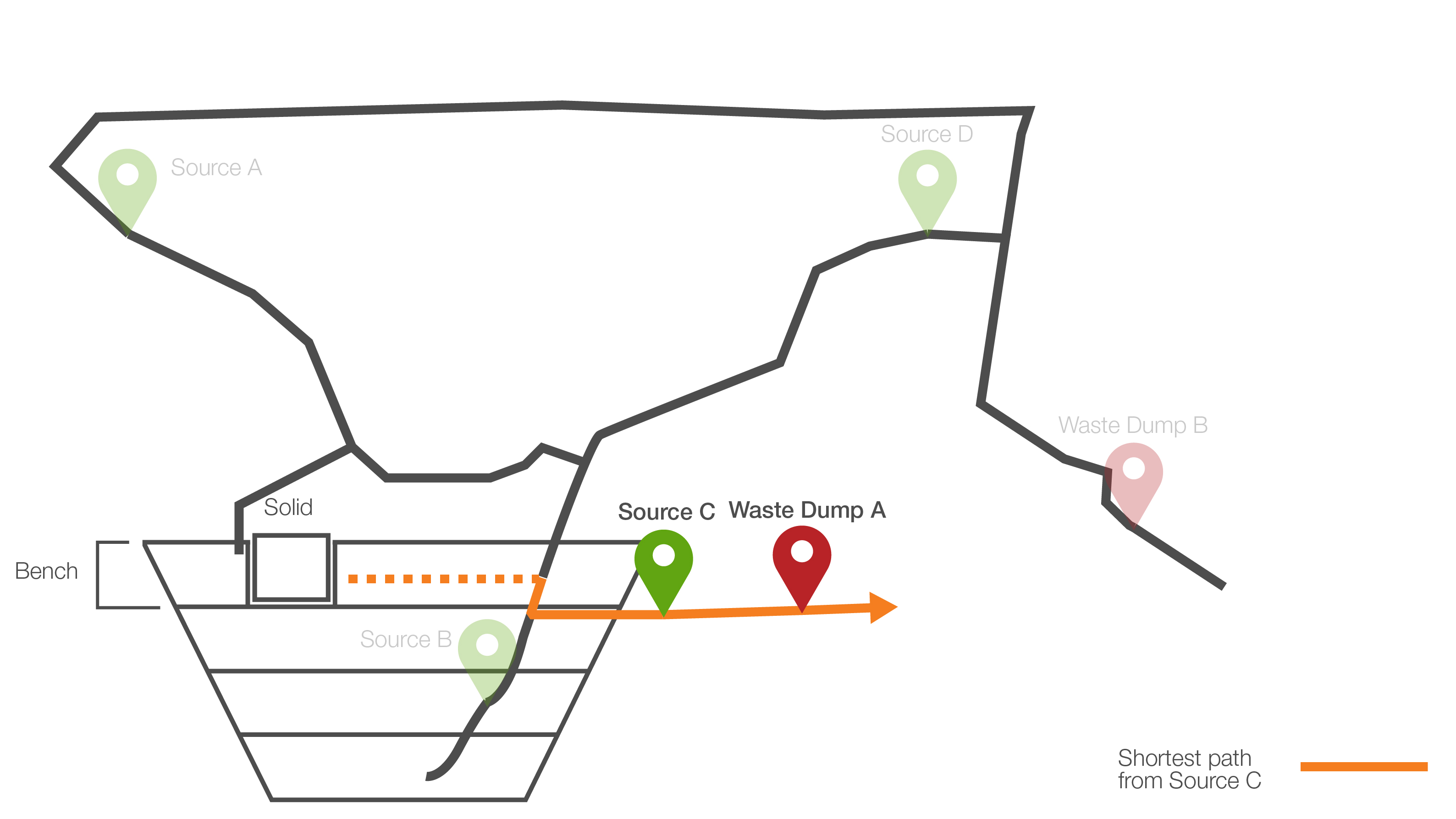
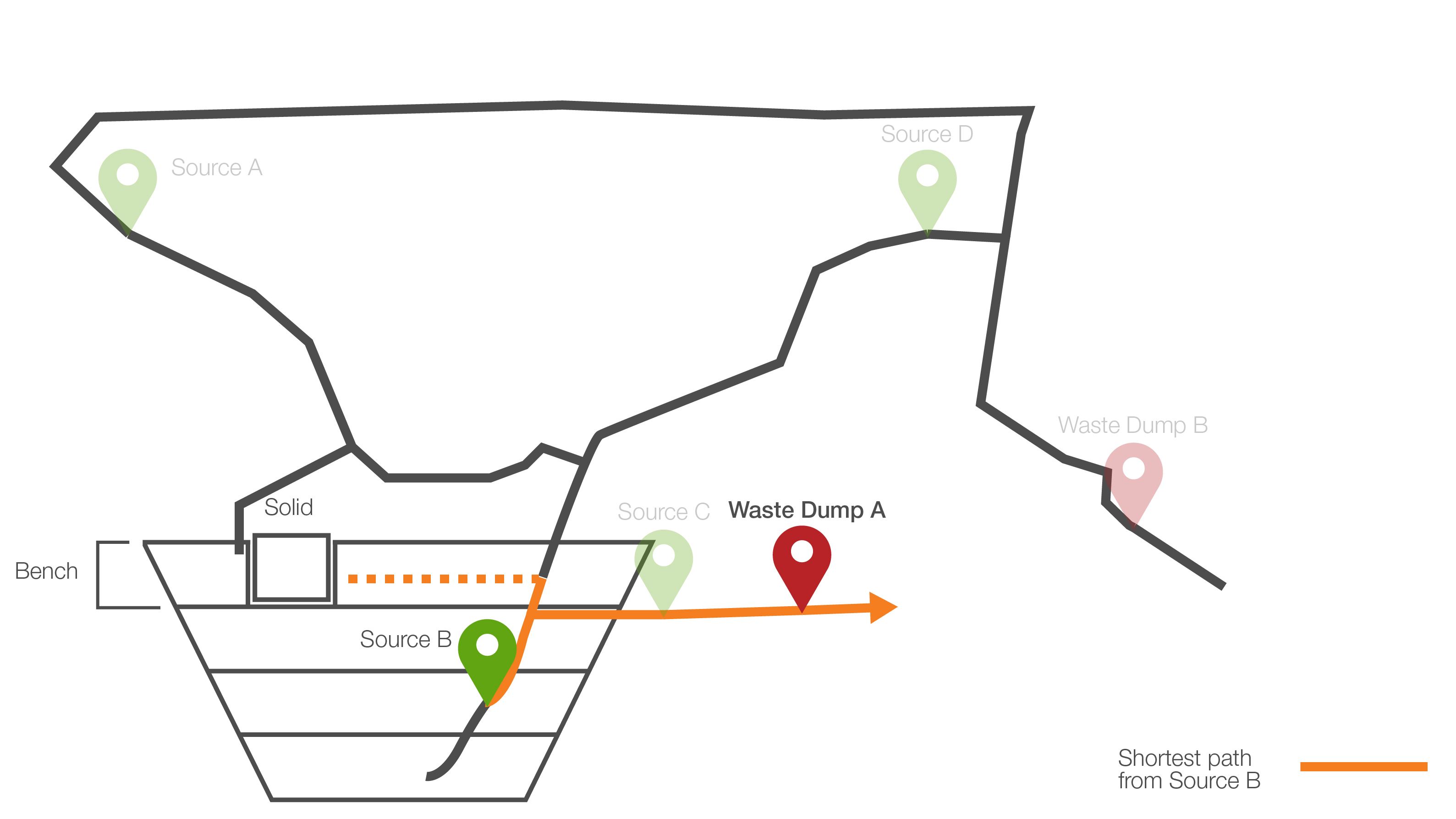
To stop such paths from being chosen, Evolution introduces the use of internal source points and filters.
By flagging a source waypoint as internal, Evolution changes how it classifies potential paths as in-pit, which can result in achieving a more realistic and optimised path. Internal sources can be especially useful when you set the waypoint filters that force certain solids or blocks to be sent through a particular waypoint.
In the image below, Source B has been marked as an internal source waypoint. As a result, the edges that are directly connected to the reference source waypoint and not directly connected to any other waypoint are considered in-pit.
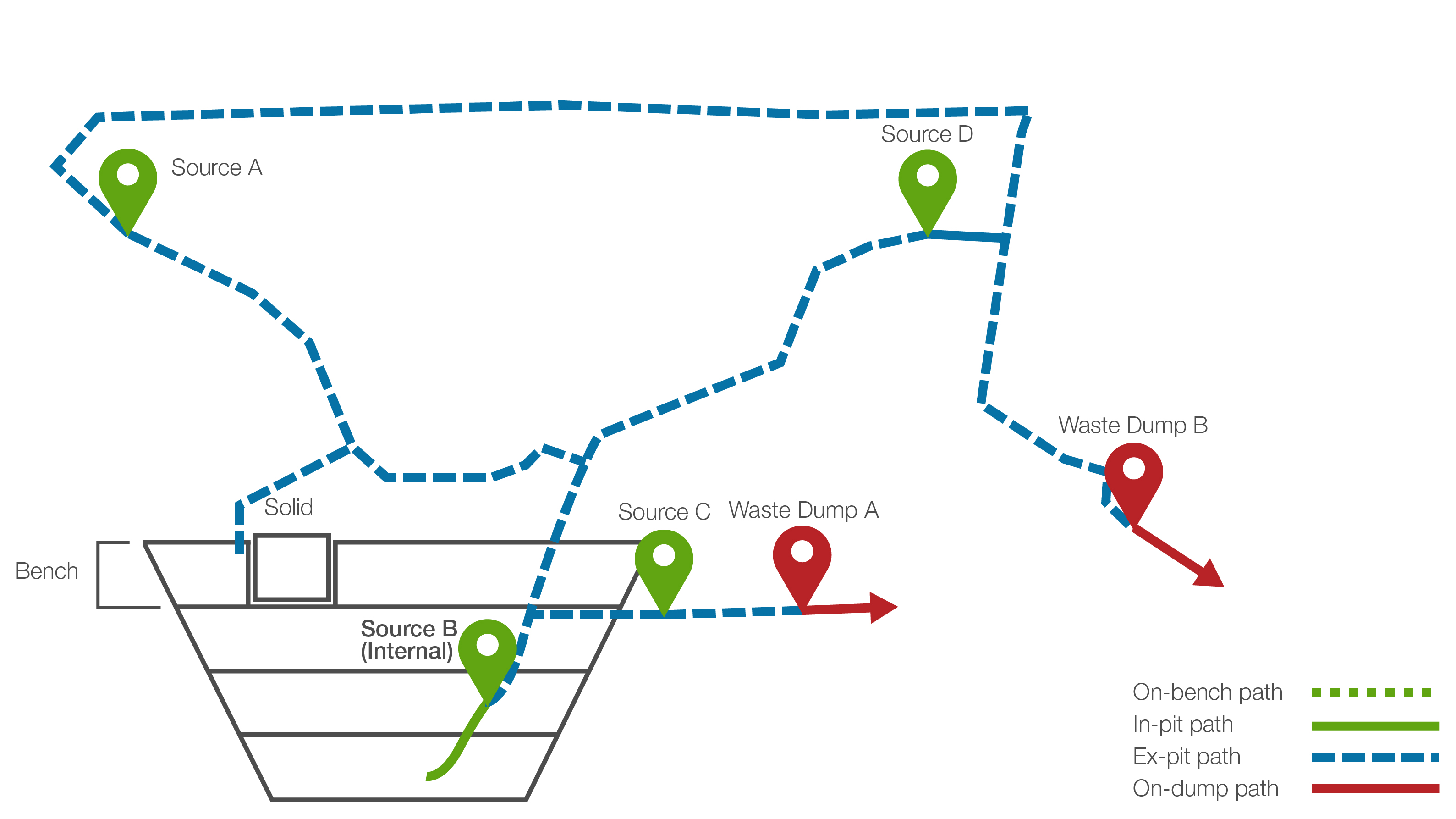
Previously, we defined a pathway as one with a source point, a destination point, an in-pit, and an ex-pit path. As there are no potential in-pit paths connected to Source B at the same height as the solid, the only way for Evolution to create a valid path from Source B to the mill is to create an interpolated pathway between the solid and Source B, as shown in the image below. While this pathway is shorter than those calculated previously, it is ranked lower in preference because it contains an interpolated path.
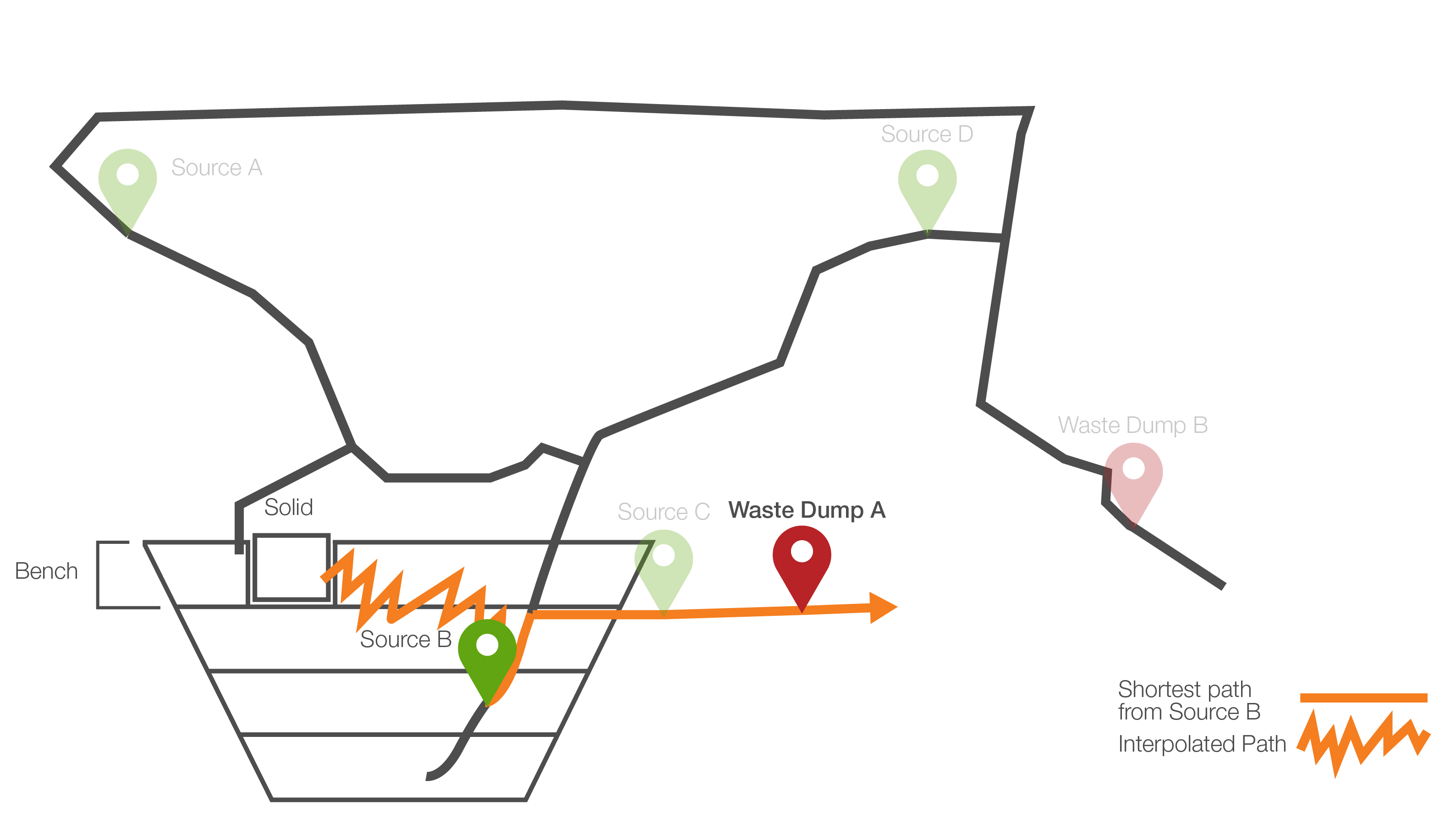
As shown above, the shortest path is still between Source C and Waste Dump A. Apart from flagging source waypoints as internal, you can also apply filters to source points. In the diagram below, the filter solid.bench < 4 is used to prevent downward drilling behaviour. In other words, only material in solids with a bench less than 4 can use this source point to get to a destination. Therefore, calculations from Source C as a reference point will be excluded for the particular solid in question.
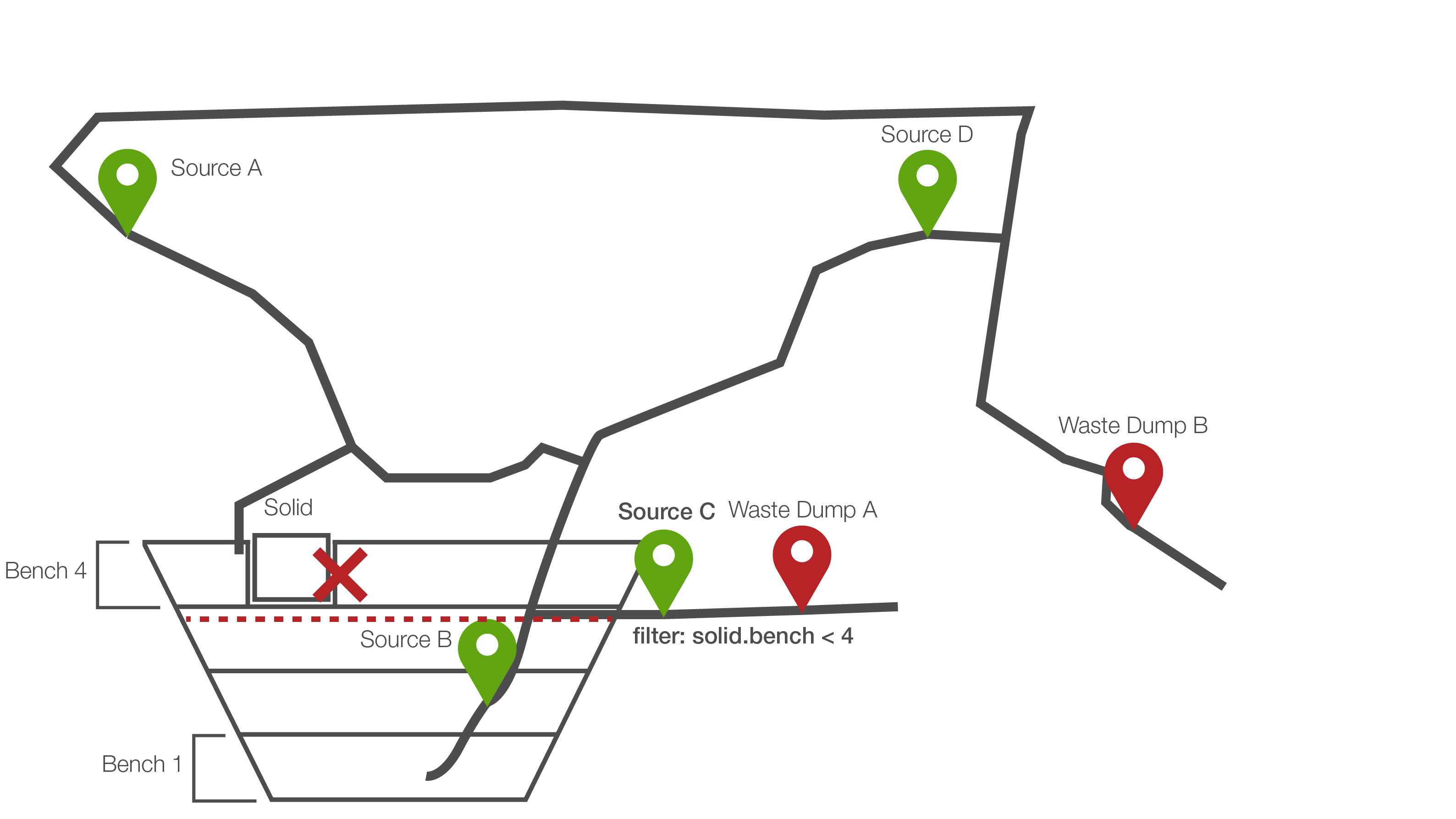
Therefore, the shortest path after applying the filter solid.bench < 4 will now be between Source D and Waste Dump B.
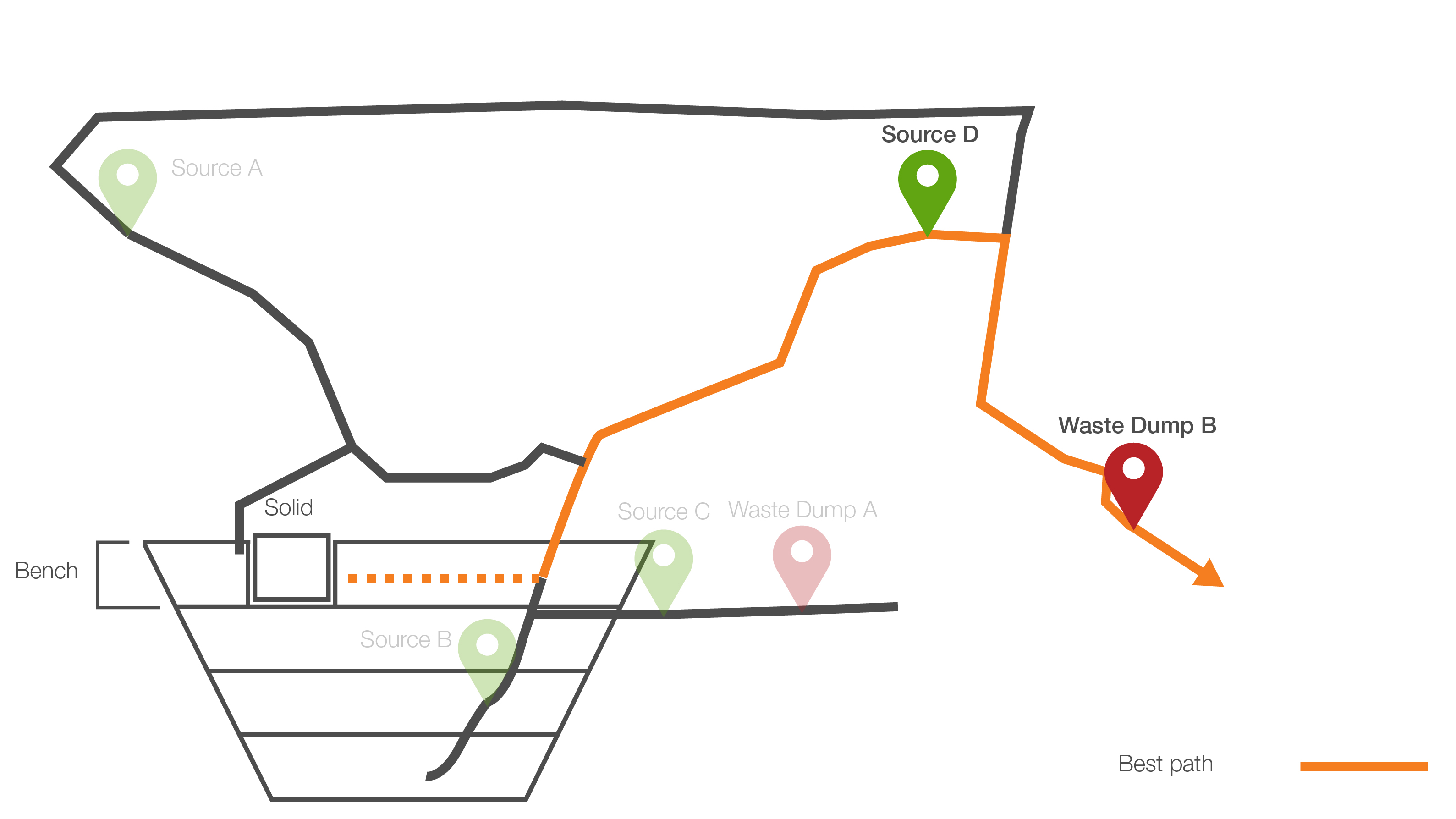
Worked example #2: Exclusive sources
Evolution also allows you to flag source waypoints as exclusive. Making sources exclusive is another way of preventing unrealistic behaviour.
In the diagram below, the aim is to mine a solid from Bench 4. To avoid downward drilling, which requires more fuel than driving horizontally, the access to source waypoints B and C must be limited. You can mark Source D as an exclusive source and apply the filter solid.bench = 4 to it. This means that solids that belong to Bench 4 will have to go through source waypoint D.
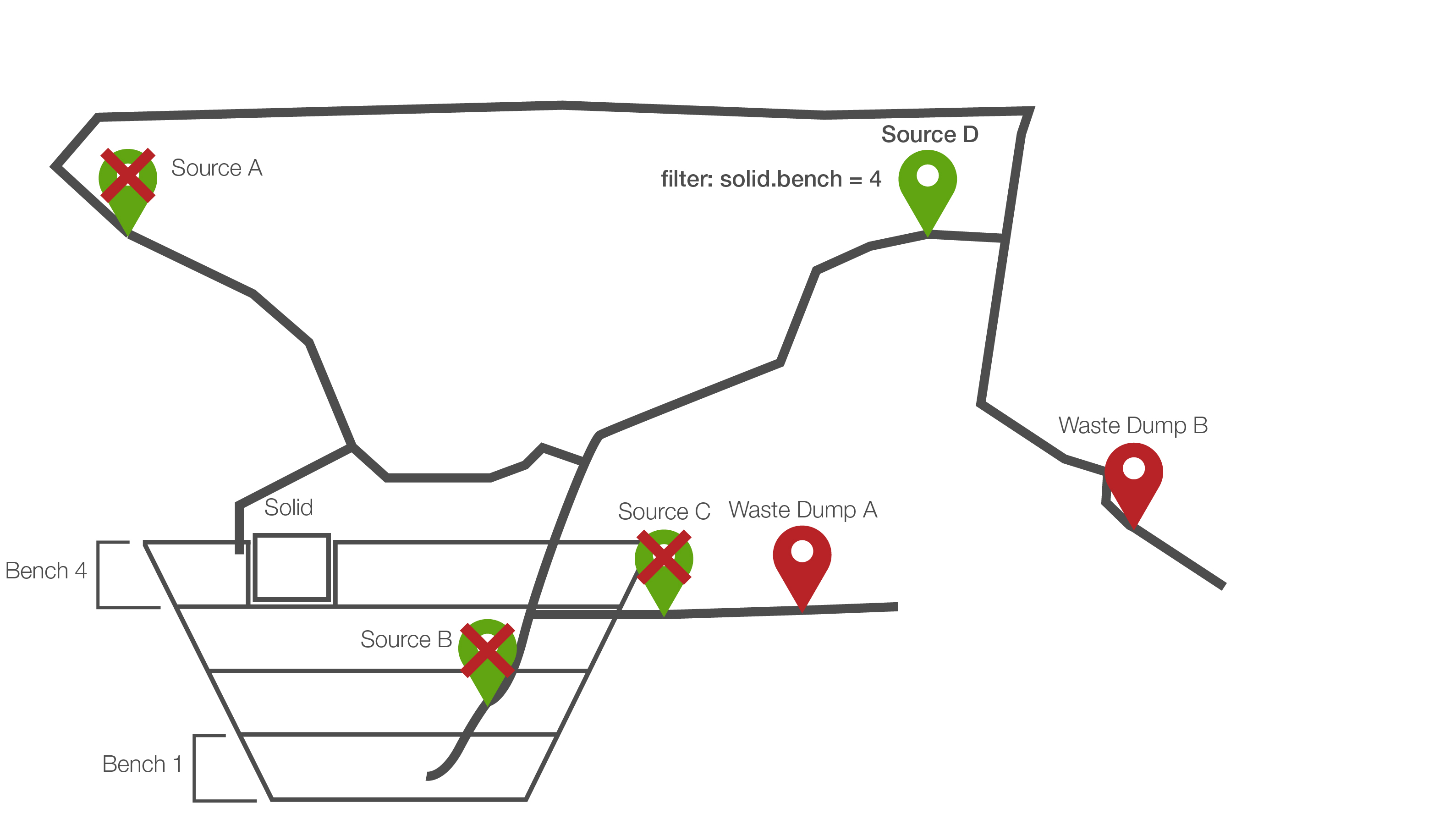
See also: Road network in Origin Blocks, Road Network in Origin Solids, and Road Network in Epoch
